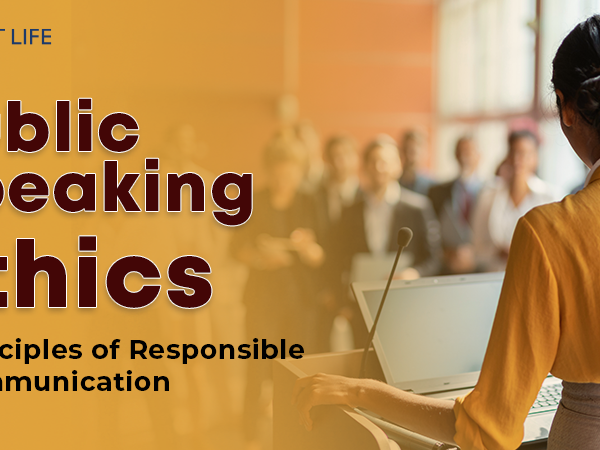Public speaking can be scary for many. But, with the right skills and techniques, anyone can become an expert. Avoid these common mistakes when speaking in public by mastering “Public Speaking: Do’s and Don’ts”!
- Inadequate preparation can lead to disorganization and forgetting your points. So, take time to research, organize your thoughts and practice your delivery.
- Avoid using jargon or complex language. Choose words that everyone will understand. This helps your message reach the audience.
- Engage with the audience instead of just focusing on yourself. This can be done by making eye contact, using appropriate body language and actively listening.
Now for a fun fact – one of the greatest public speakers was Winston Churchill! During WW2, his speeches inspired and rallied the British people. He is still an inspiration for aspiring public speakers today!
Public Speaking: Do’s and Don’ts!
Do’s of Public Speaking
Public Speaking is an essential skill to have for success. To master it, there are some tips that can help individuals become powerful communicators. With these, speakers can captivate their audience and deliver compelling talks!
- Connect with your audience: Get to know them! Conduct research on their demographics and interests. Tailor your speech for them to keep them interested.
- Practice: Rehearse multiple times to be familiar with the content and timing. This will boost your confidence and enable you to speak fluently without relying on notes.
- Utilize body language: Use gestures, facial expressions, and posture to accentuate key points. This improves your presence and helps establish a connection.
- Structure your speech: Begin with an interesting introduction, followed by main points supported by evidence. Conclude with a memorable summary that reinforces key takeaways.
- Engage the senses: Incorporate visual aids and storytelling techniques to captivate listeners. Maintain eye contact as it conveys sincerity and builds trust.
- Speak clearly and enunciate words properly. Vary speeds to maintain interest. Ask rhetorical questions for participation. Be prepared with contingency plans for technical difficulties or interruptions.
By following these dos, speakers can make their presentations unique. With these strategies, they can engage their audience, establish credibility, and leave a lasting impression. Effective communication involves connecting with the audience on a deeper level.
Also Read: Find Your Passion: A Path to Self-Discovery and Fulfillment
Don’ts of Public Speaking
Public speaking can be a real challenge for many people. To make sure your presentation is successful and captures your audience, it’s important to avoid the “Don’ts of Public Speaking.” These common mistakes must be avoided to make sure your speech is impactful and memorable.
- Never read directly from slides or notes. This stops the connection with your audience and reduces the effect of your message. Use visuals to add to your presentation instead.
- Don’t use too much technical jargon. This can confuse and isolate your listeners, making it hard for them to understand. Use simple, concise language that everyone can understand.
- Avoid speaking quickly or mumbling. Your audience won’t follow or understand your message. Speak clearly and at a good speed, allowing time for pauses and to emphasize main points.
- Don’t forget to look at your audience. Not making eye contact creates a wall between you and the people listening, reducing their engagement and trust in you as a speaker. Make eye contact throughout your presentation to build a relationship.
- Don’t clutter slides with too much text or visuals. This overloads your audience and takes away from the main points of your presentation. Use bullet points and visual aids to communicate information properly.
- No memorization without practicing or truly understanding the content. This makes you sound robotic and dull, which will make the audience lose interest. Practice delivering your speech while making sure you understand it.
Also, consider trying these tips for your public speaking:
Practice pacing yourself by including pauses during your speech. This gives time for reflection and creates excitement among your listeners.
Include stories to connect emotionally with your audience. Share personal experiences or stories they can relate to to make your speech more engaging and unforgettable.
Use body language like hand gestures and facial expressions correctly to strengthen your message and improve your delivery. Be conscious of how you use nonverbal cues to help your presentation.
Also Read: Top 100 Commonly Used A to Z Phrasal Verbs for English Fluency
Conclusion
Got a speech to give? Here’s a pro tip – practice it loads of times! That way, your delivery will be smooth and your message will come across loud and clear. Know More – The Fluent Life
FAQs – Public Speaking: Do’s and Don’ts
Q1: What are common mistakes to avoid in public speaking?
A: Some common mistakes to avoid in public speaking include not preparing adequately, speaking too fast or too softly, relying too heavily on notes, using filler words, failing to engage the audience, and not maintaining eye contact.
Q2: How can I overcome stage fright while public speaking?
A: To overcome stage fright, you can practice beforehand to build confidence, visualize yourself succeeding, take deep breaths to relax, focus on your message rather than the audience’s reaction, and start with smaller speaking engagements to gradually increase your comfort level.
Q3: Is it important to rehearse a speech before delivering it in public?
A: Yes, it is crucial to rehearse a speech before delivering it in public. Rehearsing helps you become familiar with the content, timing, and flow of your speech, allowing you to feel more confident and natural during the actual presentation.
Q4: What are some effective ways to engage the audience during a speech?
A: Effective ways to engage the audience during a speech include using storytelling techniques, incorporating humor, asking rhetorical questions, using visual aids, including interactive elements like polls or group activities, and maintaining a conversational tone.
Q5: Should I avoid using visual aids during a presentation?
A: No, visual aids can enhance your presentation when used appropriately. They can help convey complex information, engage visual learners, and make your speech more memorable. However, it is important to ensure that visual aids complement your speech rather than distract from it.
Q6: What body language tips should I keep in mind while speaking in public?
A: Some body language tips to keep in mind while speaking in public include standing tall with good posture, using hand gestures to emphasize key points, maintaining steady and purposeful movements, smiling and making eye contact with the audience, and avoiding distracting habits like fidgeting or excessive pacing.






